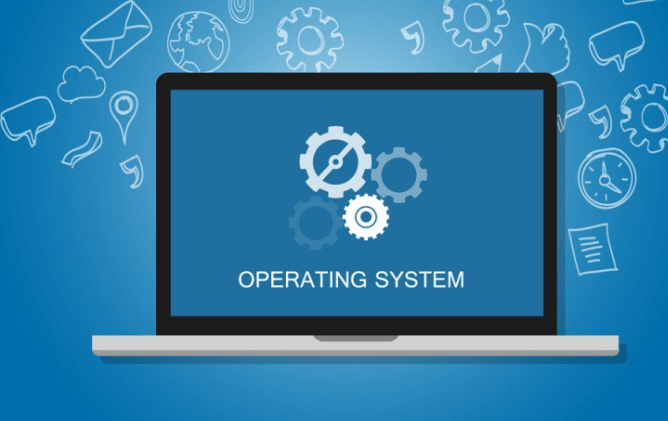Real-Time Applications: Core RTOS Concepts & Benefits Explained

As these form the basis of an almost unlimited variety of today’s real-time applications, real-time operating systems (RTOS) are an integral part of the embedded electronics design. RTOS ideas and their benefits become crucial to comprehend as our world grows more dependent on technology that requires quick and accurate responses. Modern electronic solutions are impossible to imagine without embedded systems, unique chip designs, and the benefits they bring. These parts have RTOS capabilities and are closely integrated.
What precisely is an RTOS?
To manage hardware resources, execute apps, and process data in real time, an operating system is called a real-time operating system (RTOS). A real-time operating system (RTOS) developed for the high predictability and low latency response than general purpose operating systems. In industries such as automotive systems, industrial automation, telecommunications, and medical equipment where timing is crucial this quality is of great importance.
Fundamental RTOS Ideas
Handling Tasks
The task management functionality of an RTOS is its core. The smallest units of execution are called tasks; they are often referred to as processes or threads. The remaining elements of task management in the RTOS include relation, coordination, and interaction amongst the tasks. Daily or weekly activity, priority scheduling, round-robin scheduling, and rate-monotonic scheduling; the system then decides which of the tasks has to be executed next.
Managing Interrupts
Yet another essential idea in RTOS is interrupt handling. Signals such as data arriving from a peripheral device or a timer expiring are examples of interrupts, which serve as early warning signals to the CPU.
Memory Allocation
The memory resources that tasks require to function properly are guaranteed by memory management in an RTOS. Memory leak prevention, memory region protection, and dynamic memory allocation are all included in this. Memory resources are often few in embedded systems, therefore effective memory management is crucial.
Clocks and Timers
Clocks and timers are necessary for an RTOS to manage time-sensitive actions.To handle delays, schedule jobs, and keep track of time, an RTOS employs timers. In applications like data gathering systems or communication protocols, where exact timing is essential, this is especially crucial.
RTOS Use in Embedded Systems Has Several Advantages.
Stubborn Conduct
One of the primary benefits of an RTOS is its deterministic behavior.A key component of determinism for real-time applications is its guarantee of operation completion within a given time window. Its predictability improves the embedded system’s overall performance and dependability by enabling developers to create systems that can consistently meet demanding timing constraints.
Optimizing the Use of Resources
The way that CPU, memory, and peripheral devices are used by the system is optimized by RTOS. Resources are allocated and used effectively thanks to an RTOS’s good management of tasks, interrupts, and memory. As resources are frequently limited in embedded systems, where effective use can result in improved performance and reduced power consumption, this is especially crucial.
Read also Cardigans for Women: How to Choose the Perfect Fit and Fabric
Increased Dependability of the System
An RTOS improves system reliability with its structured approach. An RTS helps prevent system crashes and guarantees that essential tasks are always finished by offering mechanisms for task prioritisation, synchronisation, and error management. In systems like medical equipment or automobiles, where a malfunction could have catastrophic repercussions, this continuity is crucial.
Efficiency and Intricacy
RTOS makes modularity and scalability easier when creating embedded systems. The stability of the system as a whole is unaffected by changes made by developers to tasks, priorities, and system configurations. It is easier to react to changing requirements or integrate new features because of this flexibility, which makes updates and additions straightforward.
Using RTOS for Embedded Electronic Design
Creating hardware and software solutions specifically for applications is the focus of embedded electronics design. An RTOS can greatly improve the capabilities and performance of the finished product by being incorporated into this design process. The integration of RTOS with embedded electronics design is worth investigating.
Personalized Chip Creation
A technique known as custom chip design or Application Specific Integrated Circuit (ASIC) entails creating logic circuits with specific application in mind. For these customized chips to function well and handle duties in real-time, an RTOS can be integrated. Designers can enhance reliability, cut down on power consumption, and maximize the performance of the semiconductor by adding an RTOS.
An RTO, for instance, can handle functions like infotainment, brakes, and engine control in a specialized chip made for automotive purposes. To improve the vehicle’s overall performance and safety, the RTOS makes sure that these activities are completed within the allotted time constraints.
Advantages of Embedded System
The small size, low power consumption, and great reliability of embedded systems are only a few of its advantages of embedded system. By offering a strong foundation for task and resource management, an RTOS amplifies these benefits. Reliable and extremely efficient solutions are produced when RTOS and embedded systems are combined.
For instance, embedded systems with RTOS can perform communication with other devices, control machinery, and manage sensors in industrial automation. Productivity rises and downtime is minimised as the RTOS makes sure that these tasks are completed consistently and in real-time.
Applicable in the Real World
Because RTOS is so widely employed in so many different real-world applications, it is both effective and versatile. Here are a few illustrations:
Automotive Systems: RTOS is utilized in infotainment, sophisticated driver assistance, and engine control units (ECUs). It guarantees the dependable and prompt operation of various systems, improving the safety and performance of the vehicle.
Medical Devices: Real-time operating systems (RTOS) offer dependable and real-time data processing in medical devices such as imaging systems, infusion pumps, and patient monitoring. This is crucial for both patient safety and an accurate diagnosis.
Automotive Technology: RTOS is utilized in robotic systems, HMIs (human-machine interfaces), and programmable logic controllers (PLCs). Higher productivity and efficiency are the results of its ability to precisely manage and synchronize industrial processes.
Communications: Routing and switching of data, signal processing, and network administration are all handled by RTOS in telecom gear. As high reliability and low latency are critical for contemporary communication systems, it guarantees both.
Conclusion:
Because they offer deterministic behaviour, effective resource use, enhanced system reliability, and scalability, real-time operating systems (RTOS) are essential to the operation of real-time applications. The complete potential of embedded systems is unlocked by their incorporation into embedded electronics design, especially in custom chip design, which produces creative and high-performing solutions for a range of sectors.
To design dependable and durable real-time applications, developers must grasp the fundamental ideas of RTOS, including task management, interrupt handling, memory management, and timers.



